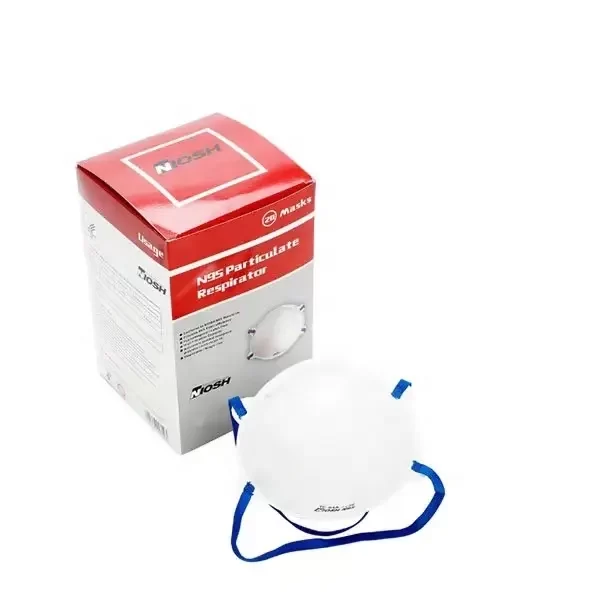The Science Behind the N95 Mask
Introduction
The N95 mask, a name that has become an everyday term amidst the COVID-19 pandemic, is arguably the unsung hero in our global fight against the deadly virus. Behind its simple appearance lies a complex marriage of scientific innovation and engineering, enabling it to offer an unparalleled level of protection against microscopic threats. This article explores the intricate science that powers the N95 mask, unveiling the mechanisms that enable it to act as an efficient protective barrier.
Decoding ‘N95’
The term ‘N95’ is not a random assortment of a letter and digits but carries specific significance in defining the mask’s protective properties. ‘N’ indicates that the mask is ‘not resistant to oil.’ This implies that the mask is designed to function optimally in environments that lack oil-based aerosols. The number ’95’, on the other hand, signifies the mask’s efficiency level. According to the rating set by the National Institute for Occupational Safety and Health (NIOSH), an N95 mask filters out 95% of airborne particles, including non-oil based particulates. This makes the mask highly effective against pathogens causing diseases such as influenza and COVID-19, which are primarily spread through respiratory droplets.
The Marvel of Filtration
Central to the efficacy of the N95 mask is its high-efficiency particulate air (HEPA) filter, which is essentially a complex web of intertwined fibers. When air passes through this filter, airborne particles are trapped through three key scientific mechanisms: inertial impaction, interception, and diffusion.
Inertial Impaction: Larger particles, due to their inertia, are unable to follow the air stream as it maneuvers around the filter fibers. As a result, these particles crash directly into the fibers, effectively becoming ensnared.
Interception: As particles navigate the winding pathway created by the fiber network, they may come within one particle’s radius of a fiber. When this happens, the particles adhere to the fiber’s surface and are successfully captured.
Diffusion: Smaller particles, moving randomly due to a phenomenon called Brownian motion, eventually collide with the filter fibers. This erratic movement and subsequent collision result in the trapping of these microscopic particles.
Through these mechanisms, the N95 mask successfully captures harmful particles, including viral and bacterial pathogens, preventing them from entering the wearer’s respiratory system.
The Role of Proper Fit
While the advanced filtration mechanism is undoubtedly critical, the fit of the N95 mask plays an equally significant role in ensuring its protective performance. To be classified as an N95 mask, the design must ensure a seal around the wearer’s nose and mouth. This design element ensures that all inhaled air passes through the filter, rather than bypassing it through gaps between the mask and the wearer’s face. A poorly fitting mask, regardless of its filtration capabilities, would fail to provide effective protection. Therefore, N95 masks are often available in various sizes and designs to accommodate different face shapes and sizes.
N95 and Its Crucial Role in Healthcare
The N95 mask has proven to be an invaluable tool in healthcare, providing critical protection for frontline healthcare workers in high-risk environments. The superior filtration properties of the N95 mask make it an optimal choice for healthcare settings where workers are exposed to airborne diseases. However, it’s crucial to note that while the N95 mask provides robust protection, it must be used in conjunction with other preventive measures, such as hand hygiene and safety protocols, to ensure comprehensive protection.
Innovation and The Future of N95 Masks
The urgent need for protective equipment during the COVID-19 pandemic has accelerated innovation in mask design and functionality. Researchers worldwide are exploring ways to enhance the N95 mask’s capabilities, focusing on elements such as comfort, fit, and even the incorporation of smart technology.
A key area of focus is the development of reusable N95 masks, given the environmental implications and supply chain challenges associated with disposable masks. Concepts include masks with replaceable filters and self-decontaminating surfaces that could kill viruses and bacteria upon contact, thereby allowing for safe reuse.
Further innovation aims at improving the comfort and fit of the mask. Future designs may include features such as adjustable straps for a customizable fit, improved breathability, and moisture-wicking materials to make prolonged mask use more comfortable.
In an era of smart technology, the N95 mask is also set to join the digital revolution. Research is underway to develop ‘smart’ masks equipped with sensors that could monitor the wearer’s vital signs, detect harmful particles in the environment, and even alert the wearer when the mask’s filtering capacity is nearing exhaustion.
Conclusion
The N95 mask, despite its seemingly simple exterior, is a complex piece of engineering powered by sophisticated scientific principles. The mask, with its impressive filtration system and emphasis on a secure fit, stands as a protective barrier against microscopic threats, testament to human innovation and resilience.
As we continue to grapple with the global health crisis and prepare for future pandemics, the science and engineering behind the N95 mask will continue to evolve, embodying our enduring commitment to health and safety. While we appreciate the protection these masks provide today, we must also look forward to the exciting innovations on the horizon, reflecting the adaptability and ingenuity inherent in our fight against disease.
Please visit our website for more product details https://medposnonwoven.com/product/n95%ef%bc%88ffp2-nr%ef%bc%89respirator-cup-mask/

